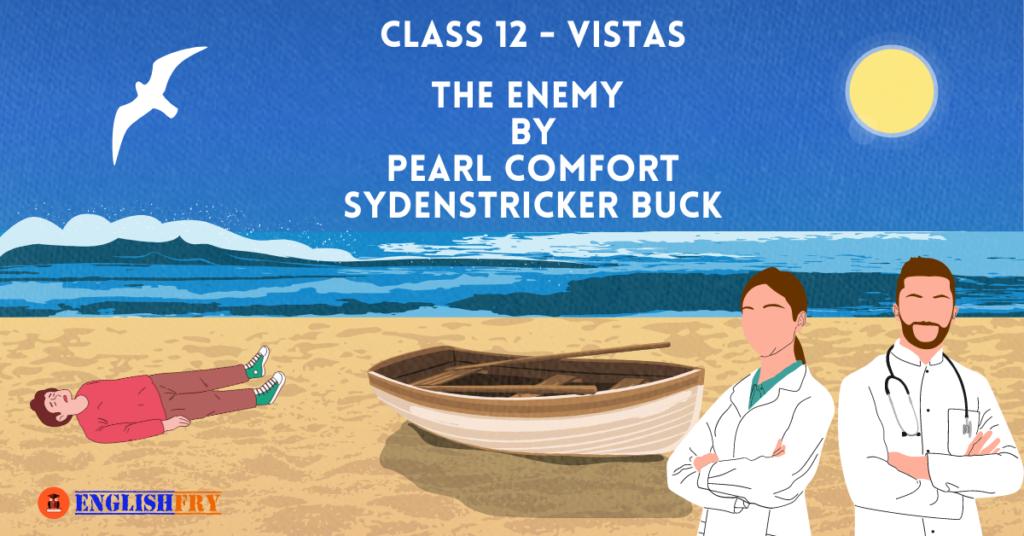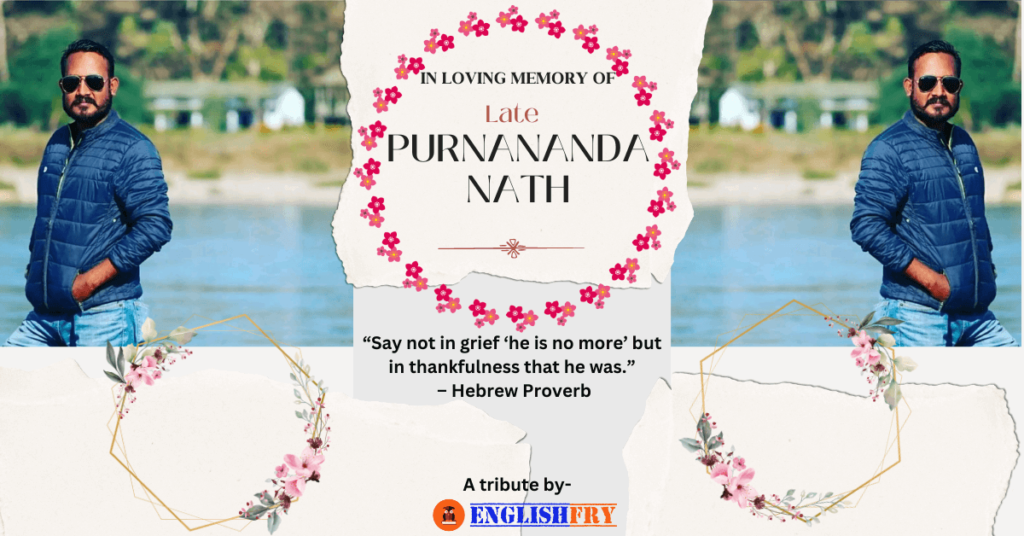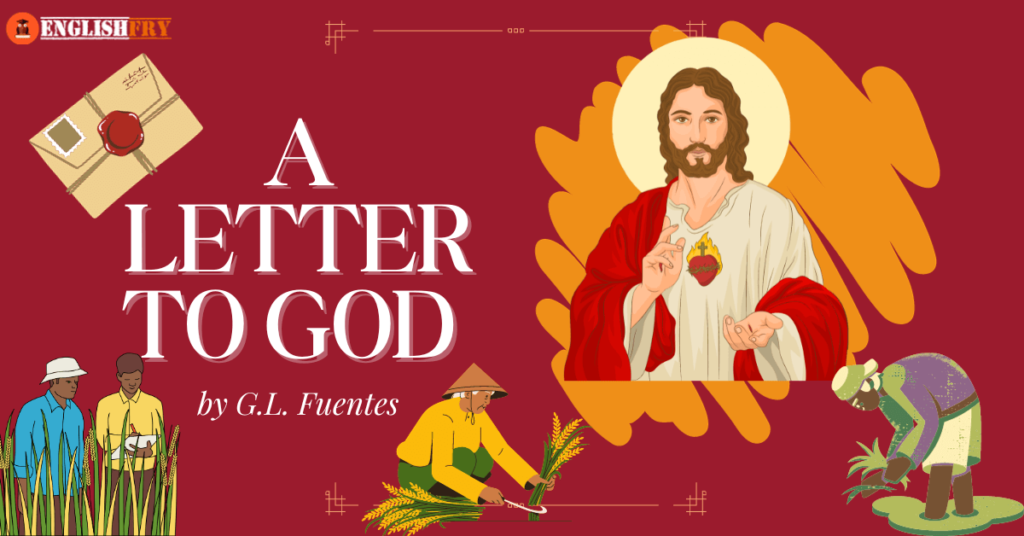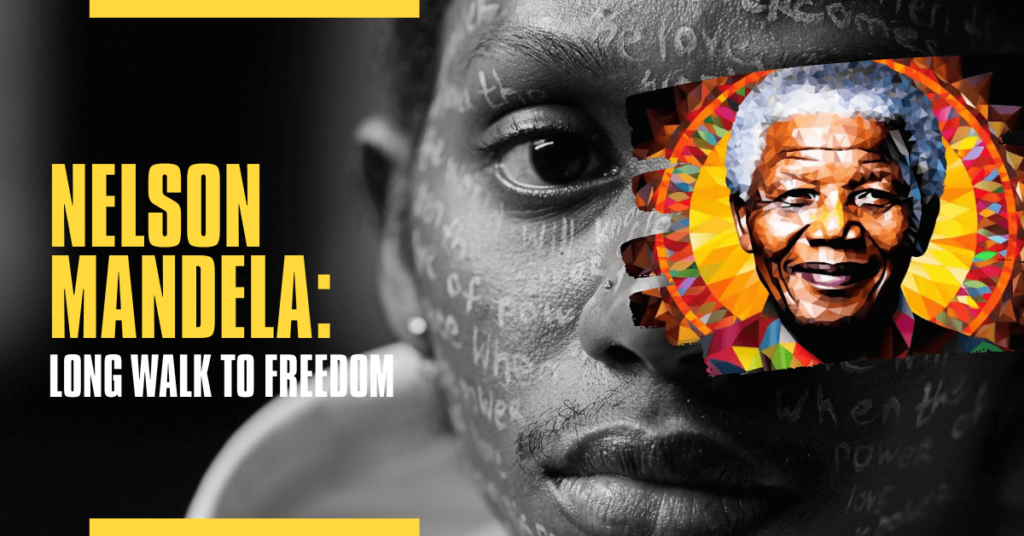Here you get the enemy class 12 vistas chapter previous years paper questions answers in English of AHSEC Assam Board and important-extra notes. The author of the chapter is Pearl S. Buck. Ncert solution with detailed explanation.
Table of Contents
ToggleBiography of Pearl S. Buck
Pearl Comfort Sydenstricker was born on June 26, 1892, in Hillsboro, West Virginia, U.S.A. Her parents, Absalom and Caroline Sydenstricker, were Southern Presbyterian missionaries, stationed in China, where she spent most of the first forty years of her life. The Sydenstrickers lived in Chinkiang, in Kiangsu (Jiangsu) province, then a small city lying at the junction of the Yangtze River and the Grand Canal.
Pearl’s father spent months away from home, itinerating in the Chinese countryside in search of Christian converts. From childhood, Pearl spoke both English and Chinese.
In 1910, Pearl enrolled in Randolph-Macon Women’s College, in Lynchburg, Virginia, from which she graduated in 1914. In 1915, she met a young Cornell graduate, an agricultural economist named John Lossing Buck. They married in 1917, and immediately moved to Nanhsuchou (Nanxuzhou) in rural Anhwei (Anhui) province. In this impoverished community, Pearl Buck gathered the material that she would later use in The Good Earth and other stories of China. From 1920 to 1933, Pearl and Lossing made their home in Nanking (Nanjing), on the campus of Nanking University, where both had teaching positions.
Pearl had begun to publish stories and essays in the 1920s, in magazines such as Nation, The Chinese Recorder, Asia, and Atlantic Monthly. Her first novel, East Wind, West Wind, was published by the John Day Company in 1930. In 1931, John Day published Pearl’s second novel, The Good Earth. This became the best-selling book of both 1931 and 1932, won the Pulitzer Prize and the Howells Medal in 1935, and would be adapted as a major MGM film in 1937. In 1938, less than a decade after her first book had appeared, Pearl won the Nobel Prize in literature, the first American woman to do so. By the time of her death in 1973, Pearl would publish over seventy books: novels, collections of stories, biography and
autobiography, poetry, drama, children’s literature, and translations from the Chinese. Pearl Buck died in March, 1973, just two months before her eighty-first birthday. She is buried at Green Hills Farm.
CHARACTERS
- Sadao Hoki – A Japanese doctor. He studied medicine in America and later returned to Japan.
- Hana – His wife, Japanese. The two met in America, became friends and married there legally. It is unlikely that Hana was a medical
- Sadao’s father – A true, die-hard Japanese, blindly patriotic. He did not allow any foreign articles at home.
- The old General – Japan’s army General; Sadao’s patient. He was a cruel man in his prime
- Tom – An American soldier who got ashore near Sadao’s house following a serious injury. Tom was treated by Sadao.
- Yumi – Sadao’s maid, in charge of the She was attached to the babies.
- Gardener – Sadao’s gardener, an old man, in service since Sadao’s father’s
- The cook – Sadao’s cook, an old man, in service since Sadao’s father’s
- An officer – A messenger of the
SETTINGS & BACKGROUND
- The story happens on a coastal town of
- Most probably in the year 1941 following Japan attacking Pearl Harbor where US army was camping and
- Japanese were hostile to the Americans. Any Japanese was ready to kill any American found in their soil.
SUMMARY
Life during second world-war in Japan. Dr. Sadao Hoki and his wife Hana spot a dark shape in the surf that turns out to be a white man; a severely wounded soldier. At first they agree to turn the man over to authorities as a prisoner of war. This makes only perfect sense considering not just the ramifications of treating his wounds, but that the doctor and his wife are both virulently racist nationalists who consider the Japanese to be superior to the white race anywhere in the world. They had met in America before the war and he only proposed because his father consented to his choice of a pureblood.
Changing their minds in the face of the massive trauma exhibited by the man, the two agree to take him back to their home and treat his injuries as an act of humanitarian compassion consistent with their belief in the superiority of the Japanese people. The must inform their servants of this decision, of
course. The servants are every bit as racially prejudiced and biased as their employers, but their edges have not been softened by the humanitarianism of medical service. The servants make no secret of their belief that the man should have been left to die and turn cold toward the doctor and his wife.
After a week of treating the white man and helping him recover from his life-threatening injuries, the servants quit when their ultimatum that the man be turned over to the authorities is met by the
doctor’s steadfast resolve. Meanwhile the man—an American named Tom—is well enough to thank the doctor for saving his life. The doctor warns him not to be premature with this assessment. When a messenger arrives for her husband, Hana is terrified that the servants have spilled the beans and they are about to be punished.
Instead, the message directed Dr. Hoki to a patient consultation with General Takima, a wife-beating hero of the Battle of Manchuria. Takima is very ill and will likely die without the surgical skill of the doctor. Sadao chooses to confess to the General about the situation with the injured soldier. The General, in a remarkable display of self-interest over duty agrees to keep the secret. After all, if he turns in the doctor, then Sadao will likely be executed and he needs the doctor alive in order to prolong his own life. They reach an agreement in which the General will send assassins to kill Tom.
After a few days, the soldier not only has not been assassinated, but has recovered much of his strength which intensifies the doctor’s fear. Since it seems the General has changed the plans they agreed upon, Dr. Hoki takes it upon himself to arrange the man’s nighttime escape aboard a Korean fishing boat without informing his wife. The escape plan seems to be going off without a hitch.
Then the doctor is called in for emergency surgery to save the General’s life and when the patient is strong enough to receive the news, he tells him that his prisoner somehow escape in the night. The General confesses that he was worried about his own life to the degree that he had completely forgotten the assassination agreement. He then goes on to very strongly that it was simply a case of carelessness and most certainly not dereliction of duty or lack of patriotism. The two men strike a deal to keep secrets secret with the General promising Sadao that he will be rewarded.
As Dr. Hoki looks out toward the horizon for the American’s signal that he was still safely in his hiding spot awaiting the arrival of the fishing boat. But the sun sets without a signal, informing the doctor that the escape has successful. This, Dr. Hoki thinks, is his real reward. As he ponders his time in America, the true depth of his irrational prejudice against the white race is revealed through his thoughts. Such is the depth of his hatred of the “repulsive” whites of the world that he is actually glad the country is at war with them.
Then muses to himself: “Strange. I wonder why I could not kill him?”
GIST
- Sadao, a Japanese surgeon finds a wounded American soldier on the beach near his house.
- He is unable to throw him back though he was his enemy as he was a doctor and his first duty was to save a life.
- Hana, his wife, though initially reluctant because it was dangerous for all including the children to keep the enemy in the house, joins her husband in operating and nursing the enemy soldier back to health, even though the servants desert the
- Hana assists Sadao in operating the soldier in spite of her physical discomfort and hesitation.
- Though it was war time and all hands were needed at the front, the General did not send Sadao with the troops as he is an expert surgeon and the General needed
- Sadao tells him about the enemy soldier but he does not take any action as he is self‐absorbed and forgets his promise that he would send his private assassins to kill the enemy and remove his body.
- Taking advantage of the general’s self‐absorption Sadao decides to save the soldiers life. After the soldier is out of danger Sadao helps him to escape from his house to safety.
THEMES
Racism as a By-Product of Nationalism
All of the Japanese characters exhibit a profoundly antagonistic attitude toward white people. The only explanation for this deep-seated hatred of whites and feeling of superiority toward them is offered through the experiences of Sadao in America. Yet, every one of his recollections prove to reference people who were kind, merciful or showing compassion toward him. If experience is the driving mechanism behind such comprehensive hatred and dismissal of millions of people simply due to the color of their skin, then Sadao’s racism can only be termed irrational. In this way, that racism is
inextricably linked to the negative influence of nationalism. Since Sadao’s experiences do not align with his bias, it can only be explained as a condition engendered by a steady diet of nationalist propaganda.
Duty vs. Self-Interest
This theme is explored through two different men representing two distinct expressions of self-interest. Sadao knows it is his patriotic duty to turn the injured white American over to the authorities as a prisoner of war, but his compassion as a physician sworn to heal trumps that duty. This is a case where self-interest is a complicated thing because his interest involves duty to his vocation. On the other hand, General Takima avoids the expectations of duty to his country in order to overlook Sadao’s dangerous decision because of a more nakedly explicit preference for self-interest. If he carries out his duty as a General, the doctor will wind up imprisoned or worse which means he will not be available to conduct the surgery which the General needs to prolong his life.
The Universality of the Human Race
Many readers may complete this story and think to themselves how much it reminds them of people they know or the problem of white supremacists or how the idea of Japanese superiority comes into conflict with that country’s wartime ally, Germany, where Hitler was preaching the gospel of Aryan
superiority. The truth is that it is fairly easy to make points about everybody is the same when characters are presented as victims of oppression. Making that point with characters who represent the worst aspects of an oppressive regime, however, is much more difficult and the story’s greatness lies in how just easily Buck pulls it off. It may not even be until after the story has been completed and allowed to simmer afterward that the expression of Japanese superiority and the unrelenting and relentlessly irrational racism of every Japanese character comes to be seen as a universal aspect united people of all colors, nationalities, and cultures.
Question and Answers
1.There are moments in life when we have to make hard choices between our roles as private individuals and as citizens with a sense of national loyalty. Discuss with reference to the story you have just
Ans:Dr. Sadao is trapped in a dilemma. On one hand, being a doctor having moral and ethical responsibility to save the wounded soldier and on the other hand, being a patriot, to let the enemy die or hand him over to the army. He fulfills his ethical responsibility, saves the man, risks his own life, his family, and reputation and then later, as a patriot plans to get him killed with the help of the army general. Later on again, he helps him escape which reflects his true personality.
2.Sadao was compelled by his duty as a doctor to help the enemy soldier. What made Hana, his wife, sympathetic to him in the face of open defiance from the domestic staff?
Ans:Hana firmly follows her husband’s sense of duty although she knows that her husband’s decision is being questioned by everyone. She is humanitarian and compassionate and goes beyond her duty to perform the tasks which she is not supposed to. It is her care that helps the man recovers quickly. She respects her husband and has a sense of duty towards him.
3.How would you explain the reluctance of the soldier to leave the shelter of the doctor’s home even when he knew he couldn’t stay there without risk to the doctor and himself?
Ans:Sadao and Hana had treated the American man with a lot of kindness and warmth. The man had suffered severely at the hands of the Japanese army as he had been made a prisoner of war. This warm attitude of Sadao and Hana gave him so much relief that he did not want to leave their house. The man felt at home – safe and warm. So, even though they were at risk at the hands of the army and the people of Japan, the man was reluctant to leave them.
4.What explains the attitude of the General in the matter of the enemy soldier? Was it human consideration, lack of national loyalty, dereliction of duty or simply self-absorption?
Ans:All his life the general had performed his duties with utmost sincerity. He realized that killing innocent men had become a burden on his soul. He understood Sadao’s mindset which indicated that he wanted to save a life irrespective of the fact that he was from an enemy country. The general also considered him to be a human being and so, excused Sadao to save his life.
5.Why did the servants leave Sadao’s house?
Ans:They were not in favour of keeping the American prisoner hidden in the house. They also did not want Dr. Sadao to save his life as he was the enemy. Also, if the police come to know of it, all their lives would be in danger. So they left the house.
6.Who was the white man whom Sadao and Hana found?
Ans:The white man was an American soldier as evident from his clothes. They guess that he was a prisoner of war from his cap that said ‘Navy Seals’.
7.‘‘But Sadao searching the spot of black in the twilight sea that night, had his reward’’. What was the reward?
Ans:The “reward” was the escape of the enemy. Dr. Sadao searched the spot of black in the twilight sea that night to see if the man was still there but there was no light. Obviously the man had gone. The escape of the prisoner was his reward.
8.What message does “The Enemy” give?
Ans: This is a great lesson in humanism. Dr. Sadao by nursing his country’s enemy proves true to his professional ethics.

The Enemy MCQ
Question 1.
The American landlady had once helped Sadao when
(a) she nursed him through influenza
(b) she gave him food for a month
(c) she had mended his clothes
(d) had not taken rent for a month
Answer: (a) she nursed him through influenza
Question 2.
Sadao got his reward when
(a) the prisoner could escape
(b) when he got an award from the government
(c) when his servants returned
(d) when his wife appreciated him
Answer: (a) the prisoner could escape
Question 3.
Sadao made the prisoner dress up in
(a) Korean clothes
(b) Chinese clothes
(c) Indian clothes
(d) Japanese clothes
Answer: (d) Japanese clothes
Question 4.
The young prisoner was asked to flash the light if food ran out
(a) twice
(b) thrice
(c) once
(d) not at all
Answer: (a) twice
Question 5.
When the assassins did not come, Sadao decided to
(a) kill the prisoner himself
(b) help him to escape
(c) hand him over to the police
(d) send him to America
Answer: (b) help him to escape
Question 6.
The General only wanted Sadao to operate upon him because
(a) Sadao was very skilled
(b) General did not like any other doctor
(c) General was his close friend
(d) General did not want to go abroad for surgery
Answer: (a) Sadao was very skilled
Question 7.
’Why are we different from other Japanese?’, this was said by
(a) the servant
(b) the General
(c) Sadao
(d) Hana
Answer: (d) Hana
Question 8.
The day Sadao opened the soldier’s stitches, he
(a) called the police
(b) typed out a letter to the Chief of Police
(c) made him run away
(d) tied him up
Answer: (a) called the police
Question 9.
All the servants in Sadao’s household
(a) were happy with their master
(b) felt that he deserved a reward
(c) were very critical of him
(d) wanted him to let the soldier die
Answer: (c) were very critical of him
Question 10.
The recovering soldier was fed by
(a) Sadao
(b) Sadao’s servant
(c) Yumi
(d) Hana
Answer: (d) Hana
Question 11.
Sadao removed the bullet from close to the soldier’s
(a) heart
(b) liver
(c) kidney
(d) lungs
Answer: (c) kidney
Question 12.
While Sadao was operating upon the wounded soldier, Liana had to rush out to
(a) drink water
(b) rest for a while
(c) to vomit (retch)
(d) to check on the babies
Answer: (c) to vomit (retch)
Question 13.
When Yumi, the servant refused to help, Hana told her that
(a) she could get out of the house
(b) go back to the baby’s room
(c) go and cook food
(d) she and Sadao would hand him over as a prisoner after making him conscious
Answer: (d) she and Sadao would hand him over as a prisoner after making him conscious
Question 14.
The reaction of the servants, when told about the injured person, was
(a) they got angry
(b) they were frightened
(c) they were willing to help
(d) they ran away
Answer: (b) they were frightened
Question 15.
The first treatment Sadao gave the wounded soldier was
(a) his wounds were washed
(b) he was operated upon
(c) he was fed
(d) his wounds were dressed
Answer: (a) his wounds were washed
Question 16.
Both Sadao and Hana thought that keeping the wounded soldier in their house would
(a) win them a reward
(b) endanger all of them
(c) arouse police suspicion
(d) make the servants angry
Answer: (b) endanger all of them
Question 17.
The wounded soldier belonged to
(a) The Russian army
(b) U.S. Navy
(c) The British army
(d) The Japanese army
Answer: (b) U.S. Navy
Question 18.
The soldier had been
(a) stabbed
(b) shot
(c) beaten up
(d) slapped hard
Answer: (b) shot
Question 19.
At first, Sadao thought he was an
(a) fisherman
(b) a criminal
(c) a politician
(d) a singer
Answer: (a) fisherman
Question 20.
Sadao and his wife had
(a) two children
(b) one child
(c) three children
(d) no children
Answer: (a) two children
Question 21.
Sadao met his wife in
(a) Japan
(b) China
(c) America
(d) India
Answer: (c) America
Question 22.
He was not sent abroad with the troops because
(a) the General needed an operation
(b) his wife did not let him go
(c) he wanted to stay back
(d) his father did not allow him to go
Answer: (a) the General needed an operation
Question 23.
Sadao went to America to learn
(a) psychiatry
(b) surgery and medicine
(c) music
(d) fine arts
Answer: (b) surgery and medicine
Question 24.
The chief concern for Sadao’s father was
(a) Sadao’s wedding
(b) Sadao’s education
(c) Sadao’s migration
(d) Sadao’s treatment
Answer: (b) Sadao’s education
Question 25.
The name of the main character in ‘The Enemy’ is
(a) Dr. Huen Tsang
(b) Dr. Sadao Hoki
(c) Dr. Chung Wa
(d) Dr. Hao Chi
Answer: (b) Dr. Sadao Hoki
Question 26.
How many children Dr. Sadao has?
(a) 4
(b) 5
(c) 3
(d) 2
Answer: (d) 2
Question 27.
At what age did Dr. Sadao go to America?
(a) 22
(b) 32
(c) 12
(d) 42
Answer: (a) 22
Question 28.
Where did Dr. Sadao meet Hana?
(a) in Japan
(b) in his neighbor
(c) in the battlefield
(d) at professor Harley’s house in America
Answer: (d) at professor Harley’s house in America
Question 29.
What does this chapter revolve around?
(a) war
(b) war between Israel and America
(c) war between Malaysia and America
(d) war between Japan and America
Answer: (d) war between Japan and America
Question 30.
Why did Dr. Sadao go to America?
(a) to meet the soldiers
(b) to meet his friends
(c) to travel
(d) to study surgery and medicine, which was his father’s wish
Answer: (d) to study surgery and medicine, which was his father’s wish
Question 31.
What idea do you form of Dr. after reading the lesson?
(a) an excellent doctor
(b) a compassionate human being
(c) a sincere and responsible citizen
(d) All these
Answer: (d) All these
Question 32.
How did Dr. Sadao emerge successfully out of all the conflicts?
(a) by throwing the patients out of his house
(b) by sending his servants out of the house
(c) by succumbing before the general
(d) by saving the soldier’s life as a sincere doctor and helping him to escape
Answer: (d) by saving the soldier’s life as a sincere doctor and helping him to escape
Question 33.
Why did Dr. Sadao help an enemy soldier?
(a) because he was an ethical and sincere doctor
(b) because he was his friend
(c) because he knew him
(d) none
Answer: (a) because he was an ethical and sincere doctor
Question 34.
Why did the servants leave Dr. Sadao’s house?
(a) because he was wounded
(b) because he was dirty
(c) because he was an American soldier and they didn’t like him
(d) All
Answer: (c) because he was an American soldier and they didn’t like him
Question 35.
Why did Dr. Sadao give his flashlight to the enemy soldier?
(a) to help him
(b) to show him the way in the dark
(c) so that he could send him a signal in case of any distress
(d) All these
Answer: (c) so that he could send him a signal in case of any distress
Question 36.
How did Dr. Sadao get rid of the American soldier?
(a) by giving him instructions
(b) by giving him a flashlight to use in times of distress
(c) by asking him to row to the island
(d) All these
Answer: (d) All these
Question 37.
What kind of person was the General?
(a) a kind-hearted
(b) a wise man
(c) a selfish man
(d) none
Answer: (c) a selfish man
Question 38.
Why did the messenger come to the doctor?
(a) to meet him
(b) for a checkup
(c) to inform about the General’s pain
(d) All these
Answer: (c) to inform about the General’s pain
Question 39.
Why did Sadao marry a Japanese girl only?
(a) because he liked Japanese
(b) he didn’t like any other nationality
(c) because of his father’s fear
(d) because he didn’t want to upset his father
Answer: (d) because he didn’t want to upset his father
Question 40.
Why did the servants refuse to help?
(a) out of fears
(b) because of superstitions
(c) because he was an American soldier
(d) All these
Answer: (d) All these
Question 41.
What was Hana’s reaction over her husband’s words?
(a) She held her mouth with her hands and vomited outside the operation room
(b) she shouted
(c) she cried
(d) she stopped helping him
Answer: (a) She held her mouth with her hands and vomited outside the operation room
Question 42.
Why did Dr. Sadao’s wife feel distressed?
(a) seeing many patients
(b) Seeing General’s reaction
(c) Seeing the orders
(d) Seeing the whiteman’s blood
Answer: (d) Seeing the whiteman’s blood
Question 43.
Why did the General not pass orders to arrest Dr. Sadao for giving space to a white man?
(a) because he trusted him
(b) because he needed him
(c) General was not in good health and needed his services
(d) None
Answer: (c) General was not in good health and needed his services
Question 44.
Who was Dr. Sadao?
(a) An Iranian doctor
(b) An American doctor
(c) A Japanese doctor
(d) None
Answer: (c) A Japanese doctor
Question 45.
Who is the author of the lesson “The Enemy”?
(a) Pearl S. Buck
(b) Dickens
(c) D.H. Lawrence
(d) None
Answer: (a) Pearl S. Buck
Question 46.
What does Dr. Sadao remember towards the end of the story?
(a) five American faces which had a lion’s share in his life
(b) which had a lion’s share in his life
(c) his first landlady, who was full of prejudice, yet saved his life when he was suffering from influenza.
(d) All these
Answer: (d) All these
Question 47.
At what age did he come back to Japan?
(a) 20
(b) 40
(c) 50
(d) 30
Answer: (d) 30
Question 48.
Why did Dr. Sadao feel alone at the beach?
(a) for not bringing his wife with him
(b) for not listening to the General
(c) for saving an American soldier’s life
(d) none
Answer: (c) for saving an American soldier’s life
Question 49.
What does the narrator speak about in the beginning of the chapter?
(a) the war
(b) the General
(c) Dr. Sadao’s childhood and his father
(d) the servants and Dr. Sadao’s wife
Answer: (c) Dr. Sadao’s childhood and his father
Question 50.
What did Dr. Sadao give to the soldier?
(a) his boat
(b) food to eat
(c) flashlight to use in distress
(d) All these
Answer: (d) All these
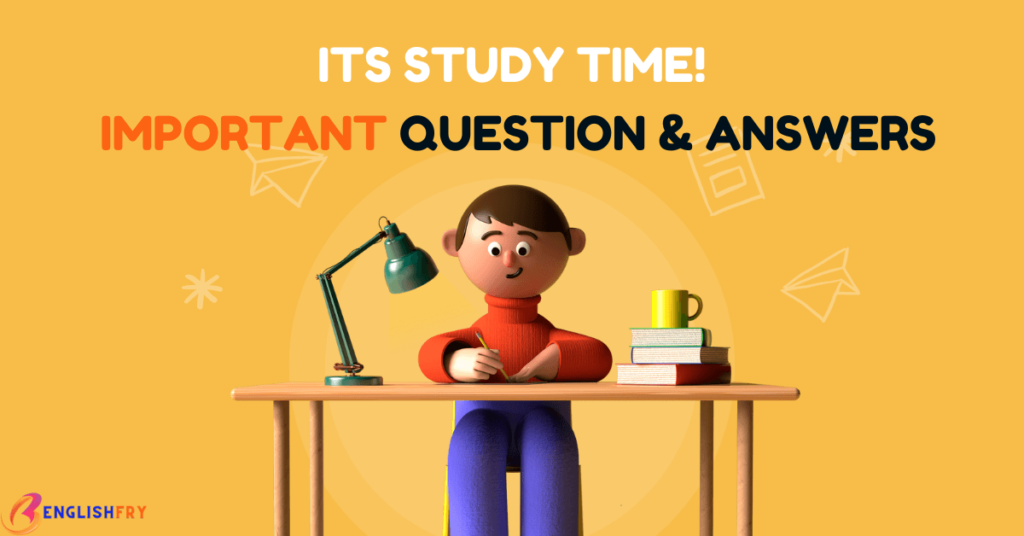
The Enemy Question and Answers
1. What was the chief concern of Sadao’s father?
Ans: Sadao’s education was his father’s chief concern. For this reason, he at 22 was sent to America to study surgery and medicine.
2. How did Sadao and Hana come to know that the man was an American, a prisoner of war and an enemy?
Ans: Sadao and Hana came nearer. They found some stains of blood on the sand. The man was wounded. He turned the man’s head and they saw his face. He was a white man. They read his faint writing on the cap: “U.S. Navy”. The man was a prisoner of war. He was an enemy soldier. Japan was at war with America.
3. Why did the servants leave Dr Sadao’s house?
Ans: Japan was at war with America. Dr Sadao was nursing a wounded American, a prisoner of war. The servants didn’t like Dr Sadao’s generosity. They considered Dr Sadao’s work an act of treachery. Hence, their patriotic feelings made them leave Dr Sadao’s house.
4. How did the General react when Sadao informed him about the prisoner of war?
Ans: The behaviour of the General was quite surprising. His personal considerations overweight all other considerations. He didn’t order the immediate arrest of the enemy. Nor did he take any action against Dr Sadao who had given shelter to an American soldier. He only offered to send two private assassins to get him killed secretly. But he never sent those men.
5. Who was Dr Sadao? Where was his house?
Ans: Dr Sadao was a famous and established Japanese doctor. He had gone to America for learning Surgery and medicine. Dr Sadao’s house was built on a spot on the Japanese Coast.
6. Will Dr Sadao be arrested on the charge of harbouring an enemy?
Ans: Japan is at war with America. Giving shelter to a sailor of the U.S. Navy is anti-national work. Dr Sadao can be arrested. He can be punished on the charge of harbouring an enemy. But it will not happen. His servants will not disclose the matter to the police. The old General knows everything but he sleeps over the matter.
7. Will Hana help the wounded man and wash him herself?
Ans: Certainly, Hana has initial hesitations. The man is a prisoner of war. He is a wounded sailor of the U.S. Navy. Hana is reluctant to help the wounded man. First, the man is her enemy. America is at war with Japan. Secondly, she thinks that by giving Shelter to such a man they can be arrested. But her essential humanity and obedience to her husband compelled her to save Tom’s life.
8. What will Dr Sadao and his wife do with the man?
Ans: After being operated on, the young man wakes up weak and terrified. Hana assures him that he need not be afraid. She serves him herself as none of the servants would enter the room. Sadao instructs him to take more rest.
9. What conflict did Dr Sadao and his wife Hana face before the doctor operated on the wounded American soldier?
Ans: Dr Sadao and his wife Hana remained in a state of conflict for quite a long time. They couldn’t throw a wounded man again into the sea. If they gave shelter to him in their house, they could be arrested. Handing him over to the police would have meant throwing him into the jaws of death. They were in a state of intense conflict. Ultimately, the duty of a doctor overpowered all other petty considerations, The servants revolted at the 1dea of serving a white man. Hana herself washed the wound. Dr Sadao had decided to operate on Tom.
Hana obeyed her husband without a word. Hana was to give the anaesthetic if the patient needed it. The doctor made a clean and precise incision. The bullet was out. At last, Dr Sadao declared: “This man will live in spite of all”.
10. Why and how did Dr Sadao help the prisoner of war to escape? Do you find him guilty of harbouring an enemy?
Ans: Dr Sadao had given a new lease of life to the American prisoner of war. He didn’t want to throw him into the jaws of death again. He asked the young soldier to take his private boat at night. He should row in the cover of darkness to a little deserted island nearby. The young American could live there until he saw a Korean fishing boat pass by. Food, bottled water and two quilts were put inside the boat. If the food ran out, he could signal two flashes. He was not to signal in darkness because he could be šeen. The young American came down into the darkness of the garden and escaped. The prisoner had gone quite safe.
No, Dr Sadao can’t be found guilty of harbouring an enemy. No doubt countries at war are considered natural enemies. But we shouldn’t forget that Sadao was a
doctor. And for a doctor saving a dying man is the foremost priority. It doesn’t matter if the dying man is an enemy.
Dr Sadao was first a doctor and then anything else. He was a wonderful surgeon. Even the old general knew his worth and kept him in Japan. Dr Sadao’s heart overflowed with human kindness.

The Enemy Summary in Hindi
जापान में द्वितीय विश्व युद्ध के दौरान जीवन। डॉ. सदाओ होकी और उनकी पत्नी हाना ने सर्फ में एक काली आकृति देखी जो एक श्वेत व्यक्ति निकला; एक गंभीर रूप से घायल सैनिक। पहले तो वे उस व्यक्ति को युद्ध बंदी के रूप में अधिकारियों को सौंपने के लिए सहमत हो गए। यह न केवल उसके घावों के उपचार के परिणामों को देखते हुए, बल्कि इस बात को ध्यान में रखते हुए भी सही लगता है कि डॉक्टर और उनकी पत्नी दोनों ही कट्टर नस्लवादी राष्ट्रवादी हैं जो जापानियों को दुनिया में कहीं भी श्वेत जाति से श्रेष्ठ मानते हैं। वे युद्ध से पहले अमेरिका में मिले थे और उसने केवल इसलिए प्रस्ताव रखा क्योंकि उसके पिता ने एक शुद्ध रक्त वाले व्यक्ति को चुनने पर सहमति जताई थी।
उस व्यक्ति द्वारा प्रदर्शित भारी आघात के सामने अपना मन बदलते हुए, दोनों उसे अपने घर वापस ले जाने और जापानी लोगों की श्रेष्ठता में अपने विश्वास के अनुरूप मानवीय करुणा के कार्य के रूप में उसकी चोटों का इलाज करने के लिए सहमत हो जाते हैं। उन्हें अपने नौकरों को इस निर्णय के बारे में अवश्य सूचित करना चाहिए,
बेशक। नौकर अपने नियोक्ताओं की तरह ही नस्लीय पूर्वाग्रह और पक्षपाती हैं, लेकिन चिकित्सा सेवा के मानवतावाद से उनकी धारें नरम नहीं हुई हैं। नौकरों ने अपने इस विश्वास को छिपाया नहीं कि उस आदमी को मरने के लिए छोड़ दिया जाना चाहिए था और वे डॉक्टर और उसकी पत्नी के प्रति उदासीन हो गए।
एक हफ़्ते तक गोरे आदमी का इलाज करने और उसकी जानलेवा चोटों से उबरने में मदद करने के बाद, नौकरों ने तब काम छोड़ दिया जब डॉक्टर के दृढ़ निश्चय से उस आदमी को अधिकारियों को सौंप देने की उनकी अंतिम चेतावनी पूरी हो गई। इस बीच टॉम नाम का एक अमेरिकी आदमी इतना स्वस्थ हो गया कि उसने अपनी जान बचाने के लिए डॉक्टर को धन्यवाद दिया। डॉक्टर ने उसे चेतावनी दी कि इस आकलन में जल्दबाजी न करे। जब उसके पति के लिए एक संदेशवाहक आता है, तो हाना घबरा जाती है कि नौकरों ने सारी बातें बता दी हैं और उन्हें सज़ा मिलने वाली है।
इसके बजाय, संदेश ने डॉ. होकी को मंचूरिया की लड़ाई के एक पत्नी-पीटने वाले नायक जनरल ताकीमा के साथ धैर्यपूर्वक परामर्श करने के लिए निर्देशित किया। ताकीमा बहुत बीमार है और डॉक्टर के सर्जिकल कौशल के बिना संभवतः मर जाएगा। सदाओ घायल सैनिक के साथ स्थिति के बारे में जनरल को कबूल करने का विकल्प चुनता है। जनरल, कर्तव्य से ज़्यादा स्वार्थ का एक उल्लेखनीय प्रदर्शन करते हुए रहस्य को बनाए रखने के लिए सहमत होता है। आखिरकार, अगर वह डॉक्टर को सौंप देता है, तो सदाओ को मौत के घाट उतार दिया जाएगा और उसे अपनी ज़िंदगी को लम्बा करने के लिए डॉक्टर को ज़िंदा रखने की ज़रूरत है। वे एक समझौते पर पहुँचते हैं जिसके अनुसार जनरल टॉम को मारने के लिए हत्यारे भेजेगा।
कुछ दिनों के बाद, सैनिक की न केवल हत्या की जाती है, बल्कि उसकी बहुत सारी ताकत वापस आ जाती है, जिससे डॉक्टर का डर और बढ़ जाता है। चूँकि ऐसा लगता है कि जनरल ने उन योजनाओं को बदल दिया है, जिस पर वे सहमत हुए थे, डॉ. होकी ने अपनी पत्नी को बताए बिना कोरियाई मछली पकड़ने वाली नाव पर सवार होकर रात के समय उस आदमी के भागने की व्यवस्था करने की जिम्मेदारी अपने ऊपर ले ली। भागने की योजना बिना किसी बाधा के पूरी होती दिख रही है।
फिर जनरल की जान बचाने के लिए डॉक्टर को आपातकालीन सर्जरी के लिए बुलाया जाता है और जब मरीज़ खबर सुनने के लिए पर्याप्त मज़बूत हो जाता है, तो वह उसे बताता है कि उसका कैदी रात में किसी तरह भाग गया। जनरल कबूल करता है कि वह अपनी जान को लेकर इस हद तक चिंतित था कि वह हत्या के समझौते को पूरी तरह से भूल गया था। फिर वह बहुत दृढ़ता से कहता है कि यह केवल लापरवाही का मामला था और निश्चित रूप से कर्तव्य की उपेक्षा या देशभक्ति की कमी नहीं थी। दोनों लोग रहस्यों को गुप्त रखने के लिए एक सौदा करते हैं, जिसमें जनरल सदाओ से वादा करता है कि उसे पुरस्कृत किया जाएगा।
जब डॉ. होकी अमेरिकी के संकेत के लिए क्षितिज की ओर देखते हैं कि वह अभी भी मछली पकड़ने वाली नाव के आने का इंतजार करते हुए अपने छिपने के स्थान पर सुरक्षित है। लेकिन सूरज बिना किसी संकेत के डूब जाता है, जिससे डॉक्टर को पता चलता है कि भागने में सफलता मिली है। डॉ. होकी को लगता है कि यही उसका असली इनाम है। जब वह अमेरिका में अपने समय के बारे में सोचता है, तो उसके विचारों के माध्यम से श्वेत जाति के खिलाफ उसके तर्कहीन पूर्वाग्रह की असली गहराई का पता चलता है। दुनिया के “घृणित” गोरों के प्रति उसकी घृणा की गहराई इतनी है कि वह वास्तव में खुश है कि देश उनके साथ युद्ध में है।
फिर खुद से सोचता है: “अजीब है। मुझे आश्चर्य है कि मैं उसे क्यों नहीं मार सका?”

The Enemy Summary in Assamese
জাপানৰ দ্বিতীয় বিশ্বযুদ্ধৰ সময়ত জীৱন। ডাঃ সদাও হোকি আৰু তেওঁৰ পত্নী হানাই চাৰ্ফত এটা ক’লা আকৃতি দেখা পায় যিটো বগা মানুহ বুলি ওলাই পৰে; গুৰুতৰভাৱে আহত সৈনিক। প্ৰথমতে তেওঁলোকে মানুহজনক যুদ্ধবন্দী হিচাপে কৰ্তৃপক্ষৰ হাতত তুলি দিবলৈ সন্মত হয়। কেৱল তেওঁৰ ঘাঁৰ চিকিৎসাৰ শাখা-প্ৰশাখাই নহয়, ডাক্তৰজন আৰু তেওঁৰ পত্নী দুয়োজনেই বিষাক্তভাৱে বৰ্ণবাদী জাতীয়তাবাদী যিয়ে জাপানীসকলক বিশ্বৰ যিকোনো ঠাইতে বগা জাতিতকৈ শ্ৰেষ্ঠ বুলি গণ্য কৰে, সেইটো বিবেচনা কৰিলে এই কথাটোৰ নিখুঁত যুক্তিযুক্ততাহে আছে। যুদ্ধৰ আগতে আমেৰিকাত তেওঁলোকৰ লগ হৈছিল আৰু তেওঁ কেৱল প্ৰস্তাৱ দিছিল কাৰণ তেওঁৰ দেউতাকে তেওঁৰ বিশুদ্ধ তেজৰ বাছনিত সন্মতি দিছিল।
মানুহজনে প্ৰদৰ্শন কৰা বৃহৎ আঘাতৰ সন্মুখত নিজৰ মন সলনি কৰি দুয়োজনে তেওঁক নিজৰ ঘৰলৈ লৈ যাবলৈ সন্মত হয় আৰু তেওঁৰ আঘাতক জাপানী জনসাধাৰণৰ শ্ৰেষ্ঠত্বৰ ওপৰত তেওঁলোকৰ বিশ্বাসৰ সৈতে সামঞ্জস্যপূৰ্ণ মানৱীয় মমতাৰ কাৰ্য্য হিচাপে গণ্য কৰে। এই সিদ্ধান্তৰ বিষয়ে তেওঁলোকৰ দাসসকলক অৱগত কৰিব লাগিব,ৰ…
ধাৰা। চাকৰসকলো নিজৰ মালিকৰ দৰেই বৰ্ণবাদী পক্ষপাতিত্ব আৰু পক্ষপাতিত্বশীল, কিন্তু চিকিৎসা সেৱাৰ মানৱীয়তাবাদে তেওঁলোকৰ প্ৰান্ত কোমল কৰা নাই। চাকৰসকলে তেওঁলোকৰ বিশ্বাসক কোনো গোপন নকৰে যে মানুহজনক মৰিবলৈ এৰি দিব লাগিছিল আৰু ডাক্তৰ আৰু তেওঁৰ পত্নীৰ ফালে ঠাণ্ডা ঘূৰিব লাগিছিল।
বগা মানুহজনক চিকিৎসা কৰি জীৱনলৈ ভাবুকি কঢ়িয়াই অনা আঘাতৰ পৰা সুস্থ হোৱাত সহায় কৰাৰ এসপ্তাহৰ পিছত চাকৰসকলে চাকৰি এৰি দিয়ে যেতিয়া তেওঁলোকৰ চূড়ান্ত আলটিমেটাম যে মানুহজনক কৰ্তৃপক্ষৰ হাতত গতাই দিয়া হয়
ডাক্তৰৰ দৃঢ় সংকল্প। ইফালে মানুহজন—টম নামৰ এজন আমেৰিকান—সুস্থ হৈ ডাক্তৰজনক ধন্যবাদ জনাইছে যে তেওঁ নিজৰ জীৱন ৰক্ষা কৰিলে। এই মূল্যায়নৰ সৈতে অকাল নহ’বলৈ চিকিৎসকে তেওঁক সকীয়াই দিয়ে। স্বামীৰ বাবে দূত আহি পোৱাৰ লগে লগে হানা আতংকিত হৈ পৰে যে চাকৰবোৰে বীন ঢালি দিছে আৰু তেওঁলোকক শাস্তি দিবলৈ ওলাইছে।
বৰঞ্চ এই বাৰ্তাই ডাঃ হোকিক মানচুৰিয়া যুদ্ধৰ পত্নী প্ৰহাৰ কৰা নায়ক জেনেৰেল টাকিমাৰ সৈতে ধৈৰ্য্যশীল পৰামৰ্শৰ দিশত নিৰ্দেশ দিছিল। টাকিমা অতি অসুস্থ আৰু চিকিৎসকৰ অস্ত্ৰোপচাৰৰ দক্ষতা অবিহনে মৃত্যু হোৱাৰ সম্ভাৱনা আছে। সদাওৱে আহত সৈনিকজনৰ পৰিস্থিতিৰ বিষয়ে জেনেৰেলৰ আগত স্বীকাৰোক্তি দিবলৈ বাছি লয়। জেনেৰেলে কৰ্তব্যৰ ওপৰত স্বাৰ্থৰ উল্লেখযোগ্য প্ৰদৰ্শন কৰি গোপন কথাটো ৰাখিবলৈ সন্মত হয়। কাৰণ, যদি তেওঁ ডাক্তৰক জমা দিয়ে, তেন্তে সদাওক মৃত্যুদণ্ড দিয়াৰ সম্ভাৱনা আছে আৰু তেওঁক নিজৰ জীৱন দীঘলীয়া কৰিবলৈ ডাক্তৰজনক জীয়াই থকাৰ প্ৰয়োজন। তেওঁলোকে এনে এক চুক্তিত উপনীত হয় য’ত জেনেৰেলে টমক হত্যা কৰিবলৈ হত্যাকাৰী পঠিয়াব।
কেইদিনমানৰ পাছত জোৱানজনক হত্যা কৰা হোৱাই নহয়, শক্তিৰ বহুখিনিও ঘূৰি আহিছে যিয়ে চিকিৎসকজনৰ ভয় আৰু তীব্ৰতৰ কৰি তুলিছে। যিহেতু জেনেৰেলে তেওঁলোকে সহমতত উপনীত হোৱা পৰিকল্পনা সলনি কৰা যেন লাগে, গতিকে ডাঃ হোকিয়ে পত্নীক নজনাকৈয়ে কোৰিয়াৰ মাছ ধৰা নাও এখনত উঠি মানুহজনৰ ৰাতিৰ পলায়নৰ ব্যৱস্থা কৰাৰ দায়িত্ব নিজৰ ওপৰত লয়। পলায়নৰ পৰিকল্পনা যেন কোনো বাধা নোহোৱাকৈয়ে চলি আছে।
তাৰ পিছত জেনেৰেলৰ জীৱন ৰক্ষাৰ বাবে ডাক্তৰক জৰুৰীকালীন অস্ত্ৰোপচাৰৰ বাবে মাতি অনা হয় আৰু যেতিয়া ৰোগীজনে খবৰটো লাভ কৰিবলৈ শক্তিশালী হয়, তেতিয়া তেওঁ কয় যে তেওঁৰ বন্দীজন ৰাতি কেনেবাকৈ পলায়ন কৰে। জেনেৰেলে স্বীকাৰ কৰে যে তেওঁ নিজৰ জীৱনক লৈ ইমানেই চিন্তিত আছিল যে তেওঁ হত্যাৰ চুক্তিখন সম্পূৰ্ণৰূপে পাহৰি গৈছিল। তাৰ পিছত তেওঁ অতি শক্তিশালীভাৱে কয় যে সেয়া কেৱল অসাৱধানতাৰ ক্ষেত্ৰ আছিল আৰু নিশ্চিতভাৱে কৰ্তব্যৰ প্ৰতি অৱজ্ঞা বা দেশপ্ৰেমৰ অভাৱ নাছিল। জেনেৰেলে সদাওক পুৰস্কৃত কৰা হ’ব বুলি প্ৰতিশ্ৰুতি দি গোপন কথা গোপন ৰখাৰ চুক্তি কৰে দুয়োজনে।
ডাঃ হোকিয়ে আমেৰিকানজনৰ সংকেতৰ বাবে দিগন্তৰ ফালে চাই থকাৰ সময়তে যে তেওঁ এতিয়াও নিৰাপদে নিজৰ লুকাই থকা ঠাইতে মাছ ধৰা নাওখনৰ আগমনৰ বাবে অপেক্ষা কৰি আছে। কিন্তু কোনো সংকেত নোহোৱাকৈ সূৰ্য্য অস্ত যায়, পলায়ন সফল হোৱা বুলি চিকিৎসকক জনায়। এইটোৱেই, ডাঃ হোকিয়ে ভাবে, তেওঁৰ প্ৰকৃত পুৰস্কাৰ। আমেৰিকাত থকা সময়খিনিৰ ওপৰত চিন্তা কৰি থাকোঁতে বগা জাতিৰ প্ৰতি তেওঁৰ অযুক্তিকৰ পক্ষপাতিত্বৰ প্ৰকৃত গভীৰতা তেওঁৰ চিন্তাৰ জৰিয়তে প্ৰকাশ পায়। পৃথিৱীৰ “বিকৰ্ষণকাৰী” বগাসকলৰ প্ৰতি তেওঁৰ ঘৃণা ইমানেই গভীৰ যে তেওঁ আচলতে আনন্দিত যে দেশখনে তেওঁলোকৰ সৈতে যুদ্ধত লিপ্ত হৈছে।
তাৰ পাছত মনতে চিন্তা কৰে: “অদ্ভুত। ভাবিছোঁ মই কিয় তাক মাৰিব নোৱাৰিলোঁ?”
Founder of Englishfry.com, a captivating and knowledge-driven blog & Founder of Android app/website Studyfunnel.com, an online Mock Test Series Portal. With a wealth of experience spanning over 16+ years, he has excelled as an Ex-Asst.Professor, Teacher, Amazon published author, Website Developer, Graphic Designer,Blogger,Poet, and Creative academic content writer publisher of 4 academic books available Online on Amazon & Flipkart. His tryst in Literature helped him realize his love for writing and telling stories. A tech-savvy language nerd by day and, a passionate writer by night, he now translates his experiences into tales of wisdom served with a side of humor.His widely recognized profound insights ,captivating writing style of weaving words make him contribute to prestigious publications and a sought-after authority in the field that transport readers to extraordinary worlds.

